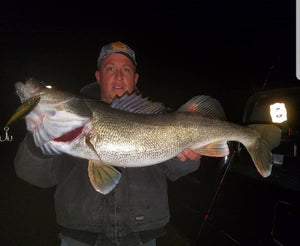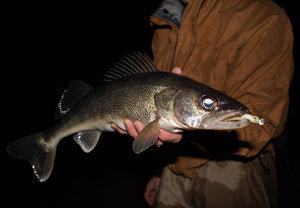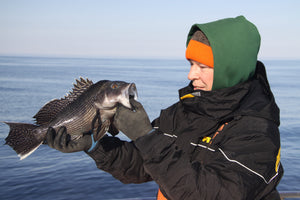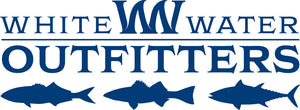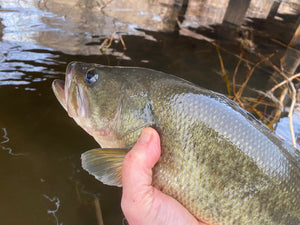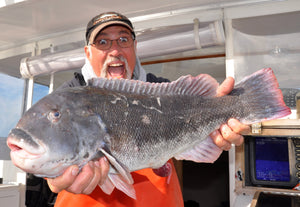Docklines: An Underrated Striper Haven
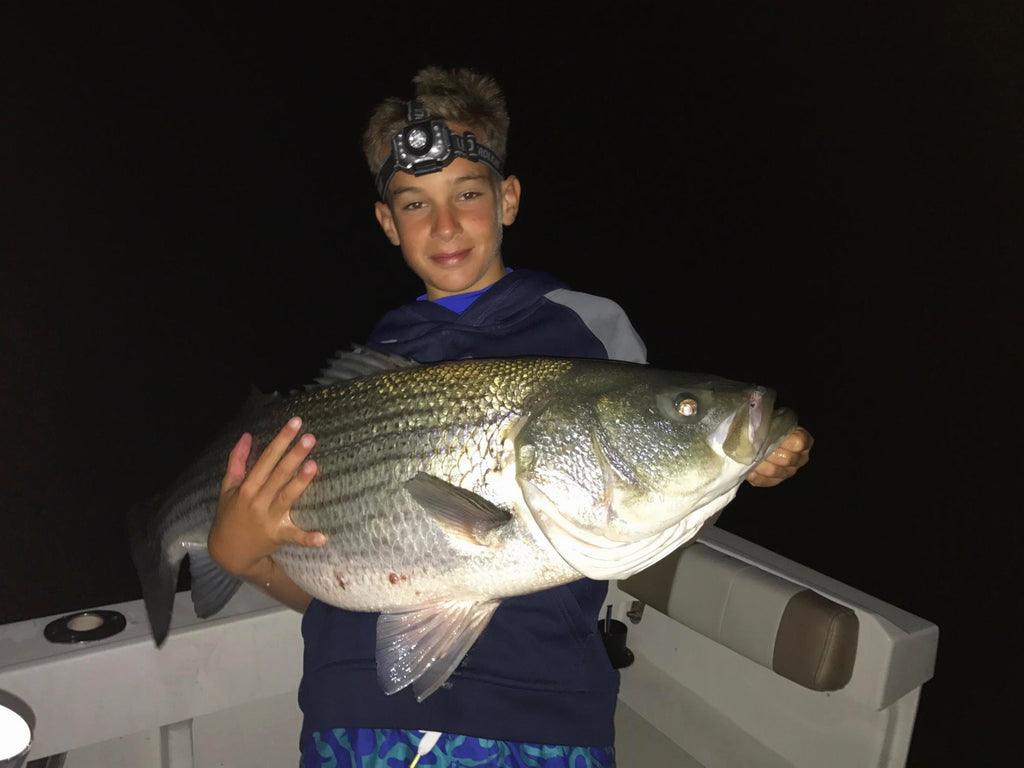
As a rule, I would say some of the best striper haunts go largely overlooked by the masses; these are the precious gems respected and treasured by sharpies and stumbled upon by lucky novices. Oftentimes such striper magnets are only a stone's throw from ones slip or quite frankly the slip itself. So consistent is their availability to yield fish, that docklines are one of the few places I would dare to label as being "a sure thing." This is no embellishment either as I have yet to add a skunk to my logbook when fishing them. Now if this comes as a revelation to you, you might be wondering what makes docklines so productive and how to go about working them effectively. Read on and I'll feed you all the education needed to plumb this gold mine of a fishery.
When it comes to back bay striper fishing, there are numerous structures anglers traditionally seek out: mud flats, sand bars, mussel and eel grass beds, sod banks, mosquito ditches, creeks, river mouths, bridges, etc. All of these areas have a proven track record for being fish sanctuaries and are capable of producing both quantity and quality at various stages of the season. Bridges have a particularly high level of popularity and seem to draw just as many anglers as they do fish. This does not come by happenstance but is a direct result of the critical advantages a bridge affords stripers. Bridge columns and subsurface foundations accrue marine growth thus encouraging the aggregation of juvenile game fish and forage species. Furthermore, they also serve to provide vital cover from surging tidal currents and generate eddies that disorient baitfish; two prized attributes of this real estate favored by big, lazy ambush predators like striped bass. Once darkness falls, bridges showcase something especially unique among the surrounding environmental; lights. the lights that shine down from the road way and navigational aids seduce a variety of prey items with their alluring glow. Light gathers everything from minute planktonic organisms, grass shrimp, cinder works, squid, crabs and a variety of baitfish species thus generating an expanse buffet line for prowling stripers. These bass lay in wait just behind the dark shadow line of the bridge spans and suck down anything carried into striking range by the tide.
All of this talk about bridges might seem off topic but amplifies perfectly to the appeal of docklines. Consider their construction: pilings, floating docks, gangways, bulkheads and stationary boats. Now don't these components mirror the structures of a bridge on a smaller scale? Even the magical fish attracting lights typical of bridges are normal fixtures along docklines. here though they are often even more pronounced.
Colored LED lighting, used for its aesthetic appeal in ameliorating the appearance of docks and boats at night, is something you won't find at a bridge but is becoming an increasing common sight around marinas and residential docks. If you can't find a dockline with prominent areas of blue or green LED lighting work them hard, this is not to say you should dismiss any other promising structure illuminated with white light but the colors definitely have a distinguished advantage for attracting bait and subsequently striped bass. It's no coincidence that sword and tuna fisherman use blue and green glow sticks and disco lights to better their odds when deep dropping or chunking at night.

For more reasons than one, not all docklines are created equal. Forgetting aspects of construction and accentuation, geographical placement is a very important factor to consider. The best docklines to work will be those in close proximity to open or deep water. to elaborate, concentrate on fishing docklines that are situated at the mouths of creeks and canals or line the outskirts of main channels and inlets. These are most easily located and commonly traversed by prowling bass. They also offer stripers ideal vantage points to intercept flushing bait and the ability to make a quick retreat when spooked or if the prevailing conditions necessitate it.
Since docklines are different from bridges in that they only run along the shallower edges of waterways rather than across their deeper portions, it's paramount you pay close attention to tide. Generally speaking, the more water you have for fishing a dockline the better. Many of my personal favorite spots are located in water of no more than 3-15 feet deep at high tide. Of these, the majority fall into the lower end of the aforementioned depth range. It is for this reason why I will only fish docklines during the top of the flood or beginning of the ebb tide. This is when the greatest amount of bait will be presented and the bass most comfortable.
Between fishing shallow water and the natural stillness of the bay at night, a stealthy approach and soft, accurate presentations are essential for working docklines. Approach your target similar to how you would a school of blitzing fish. Circle quietly around and up tide of where you want to begin casting and then cut your engines to allow yourself to drift silently towards it; when properly executed most bass will remain oblivious to your presence.
Once you are where you want to be, make gentle casts angled ahead of staging fish so your bait swings with the tide into the strike zone. Whatever you do, don't cast on top of the fish or make hard overhanded casts that slap the bait down on the surface. This is a surefire way to terminate a bite before you even get one going. Sometimes you will be forced to make overhand casts to attain distance but in these cases make such casts with ease. The majority of the time I recommend flipping your baits underhand or swinging them toward your target with a pendulum cast. These methods will be met with far greater casting accuracy and minimize noisy splashes that can spook fish. They will also reduce the likelihood of you getting snagged on pilings and stray lines and give you the ability to toss baits under standing docks and into narrow pockets where your unsuspecting quarry is laying.
Now as far as baits are concerned, leave the big, bulky plugs and jigs at home in favor of smaller finesse type lures. Though a variety of offerings fit the bill, I'm partial to 1/2 to 3/4 oz bucktails and soft plastics myself. Not only do they lend themselves to the right presentation, they're also expendable. Given the snag prone structure you'll be casting to, tossing pricey hard lures could lead to a very costly and painful night. When tossing jigs, I prefer to let the sweep of the tide do most of the work for me, imparting all but the occasional twitch or two while retrieving. If you see a noncommittal fish eyeballing the bait, sometimes a short little snap of the rod tip is all that's needed for some added impetus to warrant a strike.
If stripers are holding in a particularly shallow section of a dockline, when even the lightest jigs will simply drag bottom, I'll throw unweighted soft plastics; Pintails, Sluggos, Hogy's, etc. These I rig by threading a live bait hook through the nose of the sot plastic and then pushing the bait up over the eyelet so that it maintains a perfectly uniform profile and stays securely in place. The heavy wire of the live bait's sink rate, and give it a sort of keel so it swims properly. Unweighted soft plastics I work much more erratically than a jig, sweeping my rod tip in short, rapid strokes. When stripers see these baits darting side to side through the water column they'll often chase them down in pure, frenzied fury. Since you'll be in shallow, well-lit water as you employ this technique, the silhouette of a charging bass should appear clear as day. If the bass wasn't walloped you by this point, simply pause your bait in front of him and it will be engulfed almost instantly.
While docklines produce stripers from the onset of spring through the tail end of fall, the months of May and June stand out as a truly special time of year to target them. This is the window when big bass begin infiltrating the bays in significant numbers island-wide and are famished and eager to feed after their ocean migration. Don't be surprised if you see numerous teen to 30lb class fish or better stacked up in the lights of a dockline any given night these months; especially if there is a worm hatch or large concentrations of squid, sandeels or spearing in the area. With that being said, the time is now for you to take my lessons and apply them on your next trip. Stalking striped bass around docklines is an exciting and rewarding pursuit once you attain the knack for it and guaranteed to put more fish in your boat season after season.
Tight lines,
White Water Outfitters Crew
- White Water Outfitters Admin

